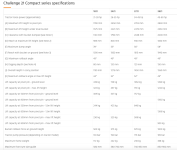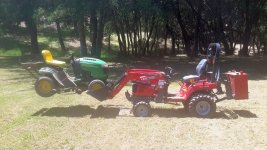kenlip
Silver Member
- Joined
- Nov 3, 2017
- Messages
- 222
- Location
- NSW Australia
- Tractor
- Kubota MX5100 with Challenge FEL and 4:1
I have a Kubota MX5100, with an FEL to which I attach either a 4-in-1 bucket or pallet forks.
The tyres are filled.
I need to make a ballast box.
My property is very hilly.
I have seen some very impressive ballasts on this forum. However, they all seem to have rather high centres of gravity (COG). Given the topography of my property, it makes sense to me to try to get the COG as low as possible. Does this make sense to you folks?
I have access to dozens of brake rotors to use in the ballast.
All advice and hints on how to design and build the ballast with the lowest possible COG in mind would be greatly appreciated.
Cheers
Ken
The tyres are filled.
I need to make a ballast box.
My property is very hilly.
I have seen some very impressive ballasts on this forum. However, they all seem to have rather high centres of gravity (COG). Given the topography of my property, it makes sense to me to try to get the COG as low as possible. Does this make sense to you folks?
I have access to dozens of brake rotors to use in the ballast.
All advice and hints on how to design and build the ballast with the lowest possible COG in mind would be greatly appreciated.
Cheers
Ken

